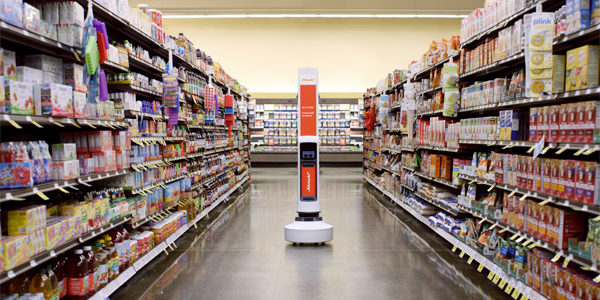Simbe robots set to monitor grocery shelves in Schnucks chain

Technology vendor Simbe Robotics Inc. said Tuesday that its autonomous, inventory-counting robot will be rolling out to at least 15 grocery stores in the Schnuck Markets Inc. chain, following a 2017 pilot program.
San Francisco-based Simbe says its Tally robot can improve supply chain visibility and inventory tracking in comparison to assigning store staff to perform labor-intensivecounts of goods on shelves. Earlier this year, Simbe upgraded that design by adding radio frequency identification (RFID) and machine learning technologies in a bid to further accelerate product tracking and inventory audits in retail settings.
St. Louis, Mo.-based Schnucks operates 118 stores in Missouri, Illinois, Indiana, Wisconsin, and Iowa, and plans to use the Tally robots to conduct product audits; provide alerts for out-of-stock, low stock, and misplaced items; expedite price tag updates; and generate real-time insights into on-shelf operations.
In its current deployment, Tally robots in Schnucks stores traverse the floors three times per day, scanning approximately 35,000 products per trip. By increasing to at least 15 stores, in an average day the Tally robots will scan over 1.5 million products, giving Schnucks more accurate, frequent, and comprehensive insights into product flow and in-store operations, according to Schnucks.
Tally robots operate alongside aisles, shoppers, and store staff, autonomously navigating around obstacles and returning to their charging docks without human intervention.
That pattern of work delivers more accurate inventory counts than human workers can provide, and frees up store associates to work with shoppers, Schnucks said. "Currently, teammates are spending several hours a week completing tasks like inventory scanning and price tag auditing. Since we implemented Tally, the robot now completes those mundane tasks, allowing teammates to focus on customer service," Dave Steck, Schnucks Vice President of IT - Infrastructure and Application Development, said in a release.
Shoppers are already picking up their groceries alongside Tally bots at Schnucks locations in Ballwin, Chesterfield, Des Peres, and Webster Groves, Mo. The system is scheduled for additional rollouts in October or November at additional sites in St. Louis, Florissant, and Twin Oaks, Mo., and in Granite City, Ill.
Related Articles
Copyright ©2024. All Rights ReservedDesign, CMS, Hosting & Web Development :: ePublishing